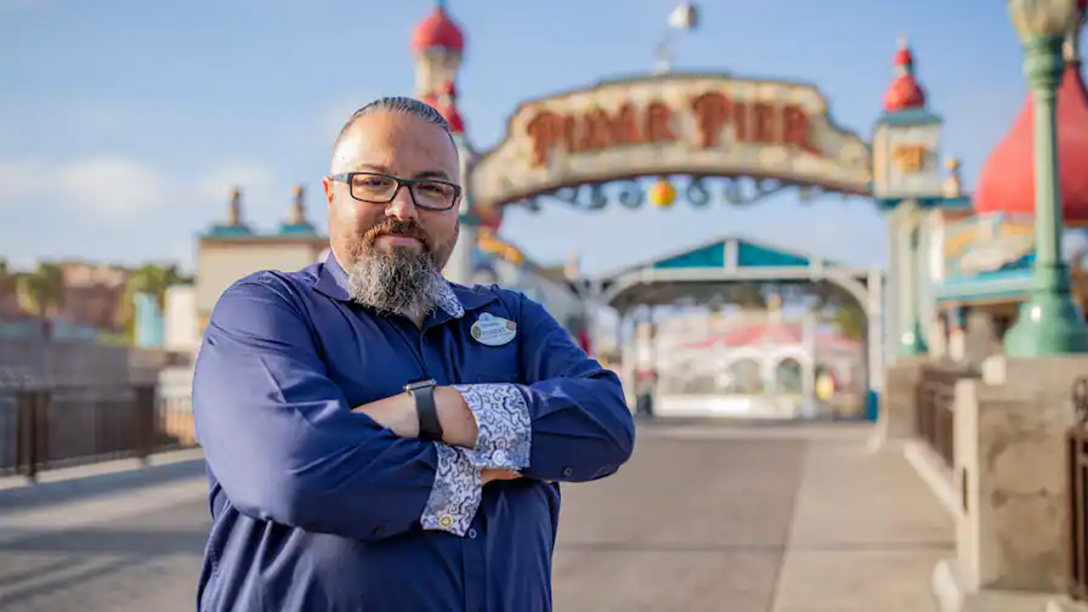I still remember the day I was diagnosed. It was 2011 and I just had a third episode of a mysterious numbness and tingling from my feet to my chest. I experienced severe imbalance and a strange tightness in my chest. My baggy shorts felt two to three sizes too small. I didn’t understand it. I had previous episodes in 2007 and 2009, but a steroid treatment made the symptoms go away. After my third episode, a specialist used a spinal tap to help diagnose my symptoms. Since they had treated it twice before, I wasn’t overly concerned. But this time, the neurologist informed me that I had a form of Multiple Sclerosis (MS) called Relapsing Remitting Multiple Sclerosis, or RRMS.
I am Robert Burger and have been with Disney for 22 years, but for the first time, I’m sharing my Enabled story during Disability Pride Month. I am currently an area manager for the Disney California Adventure park’s Engineering Services East Team. In my career, I’ve worked on several large projects including the Shanghai Disney Resort, the retheming of Pixar Pier and Incredicoaster and the launch of Star Wars: Galaxy’s Edge.
I was a part of all these projects after I was diagnosed with RRMS.
RRMS is when you experience MS symptoms in incidental attacks where, upon treatment, you can return to normal function or 95% of your previous condition. After my first two episodes, I had no lingering effects, but since my third episode, I still have numbness and tingling in my hands and fingers. This requires me to adjust simple everyday things. I experience fatigue and some balance issues, and my symptoms heighten in the heat.
Driving home after my third episode, I considered all the potential outcomes. I thought about how this would affect my performance at work, my ability to progress in my career and how I would be able to provide for my family. I was raised to not talk about feelings, emotions or complain about pain, so initially, I didn’t seek out a support system.
While I did have struggles dealing with my “hidden disability,” I pushed through. Although The Walt Disney Company has many ways of supporting cast with disabilities, my inner voice told me to keep it inside. I considered the impacts to my career or how I might be treated or excluded, and I wanted to ensure I would always be held accountable, so I hid my disability. I didn’t even use my car’s handicap placard for years because I felt that I looked “normal” and didn’t truly understand that word.
It is important for me to share my story so that others with disabilities do not live with the same reservations I did. So that allies can better understand that others may be struggling in silence, not ready to speak on their own behalf.
At work, I found a community through the Disneyland Resort ENABLED BERG (Business Employee Resource Group), which promotes respect, equality and appreciation of people with disabilities through community, awareness, education and inclusion.
I cope with my hidden disability through minor life adjustments. I plan my day to conserve energy before fatigue sets in. I found low-impact exercises, such as e-biking and scuba diving, and I don’t feel any symptoms underwater, so it provides a great feeling of wellness. I overcame not feeling “handicapped enough” and now use my handicap plates to help conserve energy. I even coach varsity and travel ice hockey from the bench, using assistant coaches to perform on-ice practice, and our team made it to the state and national championships this year.
I found that with the right mindset and adjustments to your life, anything is possible. I am proud to share my story this Disability Pride Month to give a voice to the many people who have “hidden disabilities” like me. Because at the end of the day, we all want to be our best self, walk with our heads held high and feel supported in our professional careers.
